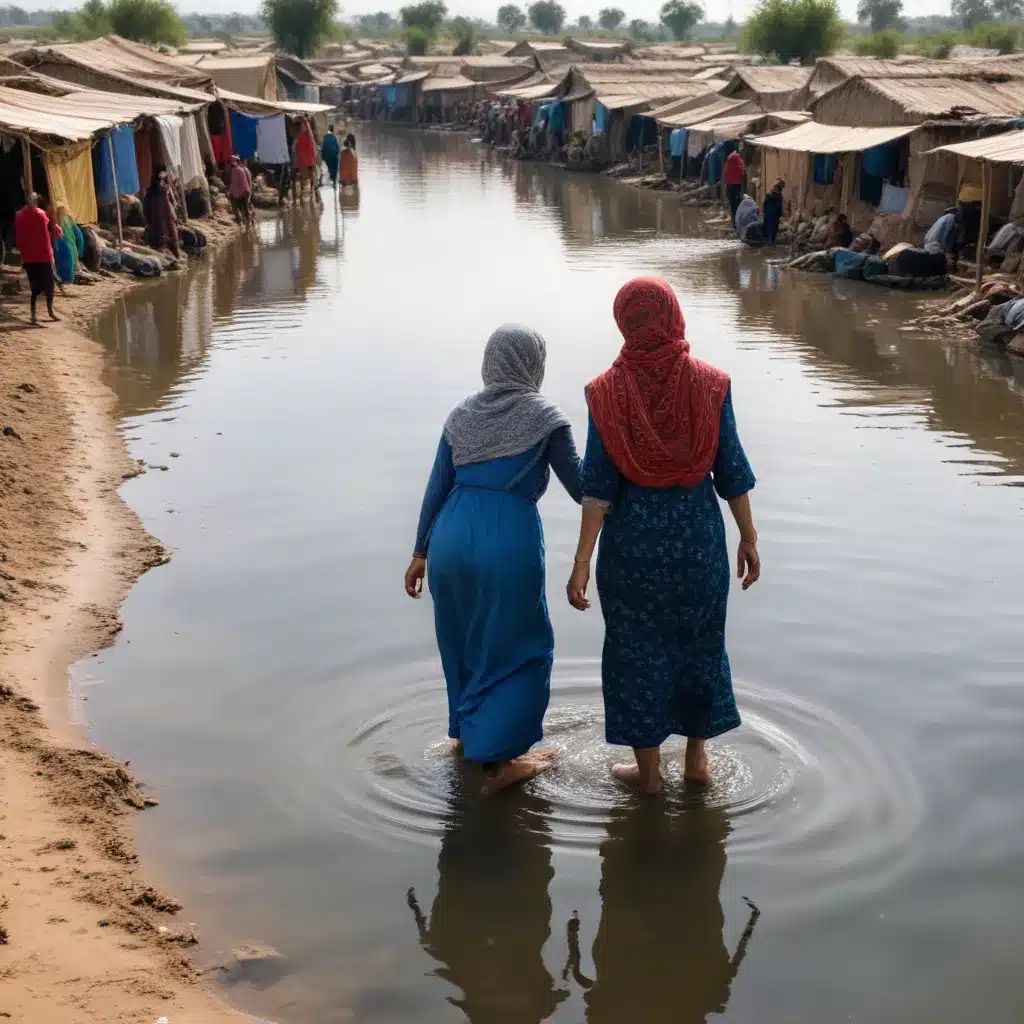
Navigating the Intersections of Water, Culture, and Displacement
As we grapple with the escalating global water crisis, it is crucial to recognize that the impacts of water scarcity, contamination, and disasters extend far beyond the physical realm. These water-related challenges are intrinsically linked to the cultural fabric of communities around the world, shaping their very way of life, identity, and resilience.
Unraveling the Cultural Threads of Water
Water is not merely a physical resource; it is a sacred element deeply intertwined with the spiritual, social, and economic foundations of diverse cultures. From the ceremonial cleansing rituals of indigenous communities to the intricate water management systems that have sustained agricultural traditions for generations, water is woven into the tapestry of cultural heritage.
When water sources become scarce or contaminated, the reverberations extend far beyond the practical challenges of accessing clean water. Communities are forced to grapple with the erosion of their cultural practices, the disruption of their livelihoods, and the displacement of their very way of life. This intersection of water and culture is particularly evident in the case of water-related displacement and migration.
Displacement and Migration: The Human Face of the Water Crisis
As climate change, pollution, and mismanagement of water resources exacerbate global water insecurity, communities are being uprooted from their ancestral lands, leaving behind not only their physical homes but also their cherished cultural identities. The IIED report highlights the profound impact of water-related displacement, noting that “the loss of cultural practices and social cohesion can deeply affect the well-being and resilience of displaced communities.”
These displaced individuals and families are not merely statistics; they are human beings with rich cultural traditions, intricate social networks, and deep-rooted ties to their land. When they are forced to abandon their homes and communities, they often find themselves navigating unfamiliar environments, struggling to preserve their cultural heritage, and grappling with the psychological and emotional toll of displacement.
Amplifying Voices and Building Resilience
Addressing the cultural dimensions of water-related displacement and migration requires a multifaceted approach that goes beyond the technical solutions. It demands a deep understanding of the lived experiences of affected communities, their cultural values, and their strategies for coping and adapting.
The Joint Action for Water community has long recognized the importance of incorporating cultural insights into water and sanitation initiatives. By fostering collaborative partnerships with local stakeholders, amplifying the voices of displaced communities, and incorporating traditional knowledge into sustainable water management practices, we can help to preserve cultural resilience and empower communities to navigate the challenges of water-related displacement.
Cultivating Resilience through Cultural Preservation
One powerful example of this approach can be found in the Sahel region of Africa, where the IPCC report highlights the profound impact of climate change on pastoral communities. As droughts and desertification disrupt traditional grazing patterns and access to water resources, these communities are being forced to adapt their age-old practices to survive.
However, the report notes that the resilience of these pastoral systems is often threatened by factors beyond climate change, such as “land tenure, sedentarisation, changes in traditional institutions, invasive species, lack of markets, and conflicts.” By working closely with these communities to understand their cultural practices, social structures, and traditional coping mechanisms, water and sanitation professionals can develop tailored solutions that support the preservation of their cultural identity and livelihood strategies.
Embracing Diversity and Fostering Inclusive Dialogue
Similarly, in the context of water-related displacement in urban areas, the World Bank report highlights the importance of embracing the cultural diversity of migrant communities and fostering inclusive dialogue. As displaced individuals and families seek refuge in cities, they bring with them a rich tapestry of cultural traditions and coping strategies.
By engaging these communities as active partners in the design and implementation of water and sanitation services, we can ensure that their needs, preferences, and cultural practices are reflected in the solutions. This not only enhances the effectiveness and sustainability of the interventions but also empowers displaced individuals to maintain their cultural identity and sense of community, even in the face of adversity.
Celebrating Cultural Resilience and Adaptive Capacity
Ultimately, the intersections of water, culture, and displacement underscore the remarkable resilience and adaptive capacity of communities around the world. Despite the immense challenges they face, many displaced individuals and families have developed innovative strategies to preserve their cultural heritage and build new lives in unfamiliar environments.
By acknowledging and celebrating these cultural strengths, water and sanitation professionals can learn valuable lessons that can inform more holistic, culturally sensitive, and community-driven approaches to addressing water-related challenges. This, in turn, can contribute to the creation of more equitable, resilient, and sustainable water systems that respect and empower the diverse cultural tapestry of our world.
Conclusion: Rippling Reflections and a Call to Action
As we navigate the complex and evolving landscape of water-related displacement and migration, it is essential that we embrace the cultural dimensions of these challenges. By understanding the deep-rooted connections between water and the cultural identity of communities, we can develop more effective, inclusive, and sustainable solutions that preserve the resilience and adaptive capacity of those affected.
Through collaborative partnerships, inclusive dialogue, and the integration of traditional knowledge, the water and sanitation sector can play a pivotal role in supporting the cultural preservation of displaced communities and empowering them to build resilient futures. By doing so, we can ensure that the rippling reflections of water-related displacement are not merely stories of loss and upheaval, but also of resilience, adaptation, and the enduring strength of human culture.
The Joint Action for Water community is committed to this call to action, and we invite you to join us in this vital endeavor. Together, we can work to create a world where water-related challenges no longer threaten the cultural fabric of our communities, but instead serve as a catalyst for renewed appreciation, mutual understanding, and collective resilience.

